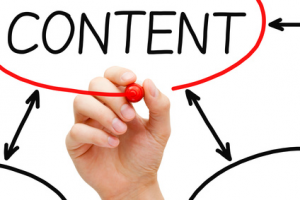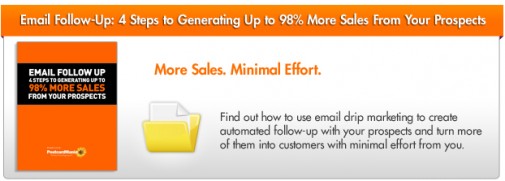3 Examples of Great Email Marketing Content
Updated on July 15, 2021 Drip email campaigns are really an essential marketing tool for small businesses. They let you follow up with prospects in a personal way – without requiring all that much in terms of setup or upkeep time!
Drip email campaigns are really an essential marketing tool for small businesses. They let you follow up with prospects in a personal way – without requiring all that much in terms of setup or upkeep time!
If you’re not familiar with the medium, basically you create a bunch of emails, load them into an email software program, and start the campaign. Then, as prospects are added to your email list, they receive your pre-written emails at the time intervals of your choice (i.e. once a week, every two days, whatever!)
Drip emails build trust and brand credibility by educating prospects on the benefits of your product. When you start your drip campaign after the prospect’s first contact, it nurtures that lead all the way through the sales cycle until they become your customer.
Of course, in order to use drip email marketing effectively, you have to know what to put in your email marketing content (and what not to). Let’s look closer at the two most important aspects of an email: the subject line and the message.
The Subject Line:
Check out these stats about email subject lines:
- 64% of people say they open an email because of the subject line.
- Discount terms in subject lines generally performed below average.
- Personalized subject lines are 22.2% more likely to be opened.
Your subject line is CRUCIAL! Like the headline on a postcard, you have less than a second to convince the reader to open the email. The subject line needs to be engaging to grab their attention, but the tone absolutely must be personal and informal. If it reads like an advertisement, it’s SPAM-bound.
The Message:
Rule number one: keep it simple. The average person gets over 100 emails a day. If your email has long paragraphs of text, prospects won’t give it a chance. They don’t have time to read a dissertation on the virtues of your products or services. Keep it short, fun and easy-to-read. Bullet points are great for this. Case in point…
Here are some examples of great email content:
- Customer Testimonials
- Description of a Product or Service’s Benefits
- Facts or Background on Your Company
It’s also good to change up the type of content you send to keep your content fresh. Start with an introductory email introducing your company and your staff. Then, the next one can detail the benefits of your services. For your third email, you can send a few testimonials from satisfied customers to build your credibility. Don’t get monotonous or your emails will become background noise to the reader.
Want to learn more about creating great email marketing content, including a full example of an effective 6-week drip email campaign for a small business? Download our FREE report: Email Follow Up: 4 Steps to Generating Up to 98% More Sales From Your Prospects!
Best,
Joy





